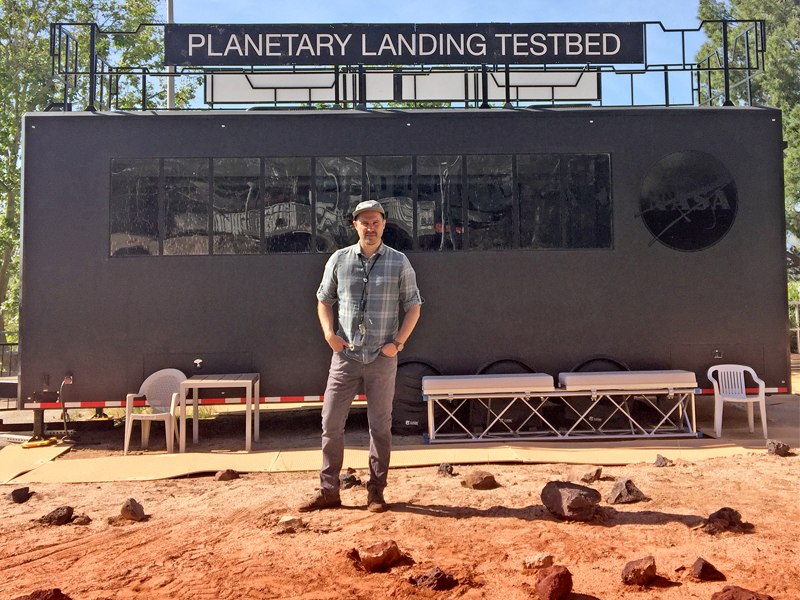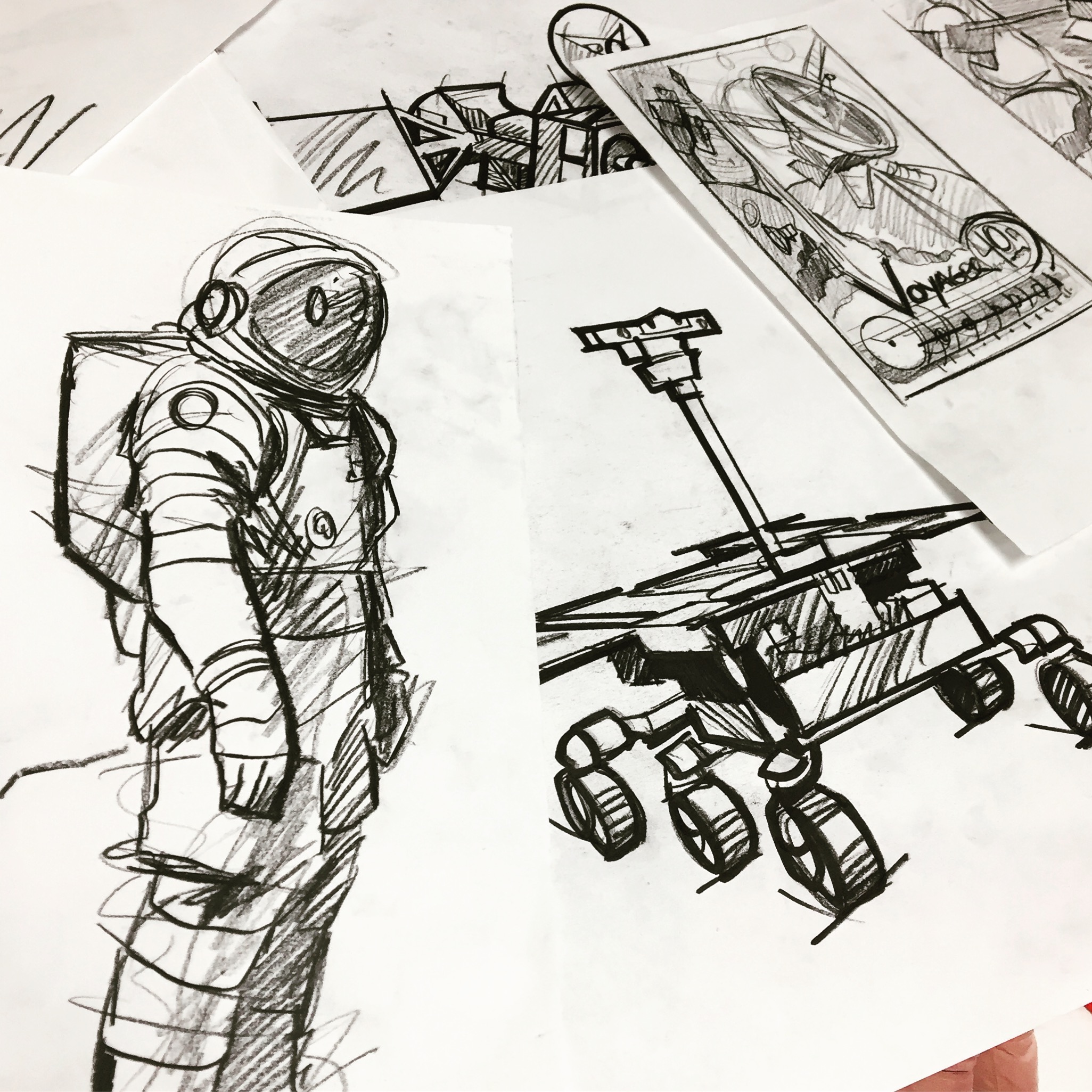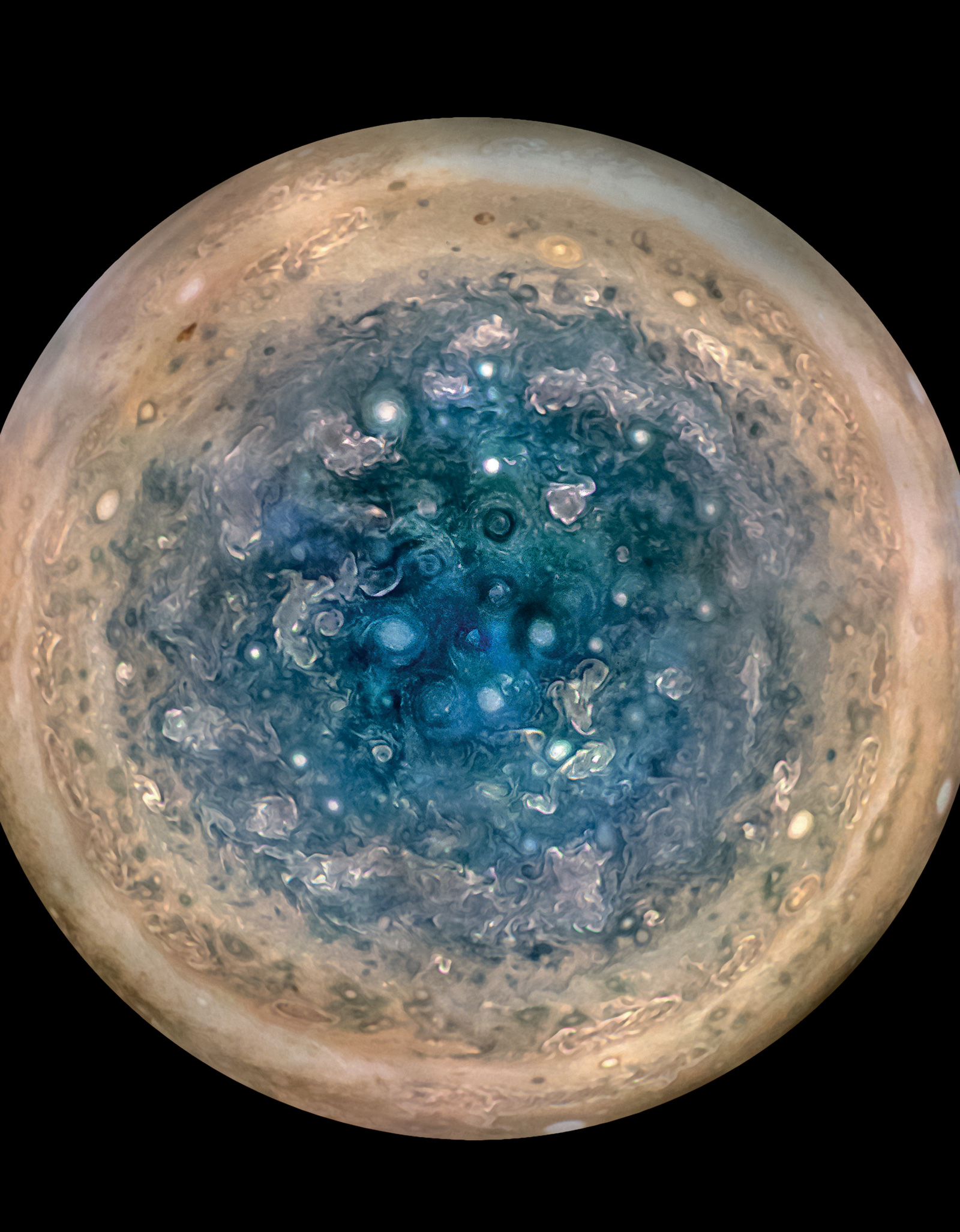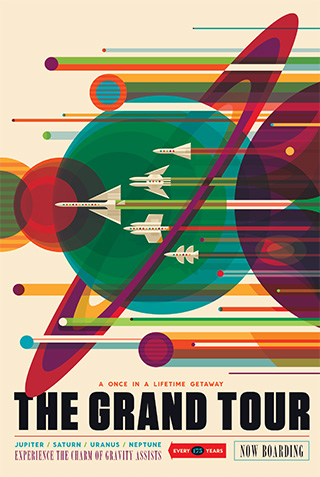
Joby Harris
Visual Strategist - JPL
Knoch High School
Art Institute of Pittsburgh
Industrial Design and Technology
As a boy I was obsessed with the world of "Star Wars" and the overall aesthetic of science fiction. This anything goes design philosophy allowed alot of room for imagination. Not much had to really have a functional purpose, just to simply look cool.
As I grew up and went to school, I learned more and more about the REALITIES of physics and science and although dismayed by the non-existence of laser swords, still fell in love with the simple yet complex nature of our own planet, solar system and universe. As a designer I wanted to devote my abilities to helping scientists, engineers and the public better observe and understand these mysteries and curiosities in visual, inspirational and experiential ways.
In 2012, right after Curiosity had landed on Mars, I was invited to join a small, budding design studio at NASA's Jet Propulsion Laboratory. My background is in film, TV, music and theme parks so I was unsure exactly how I could help this incredible organization with design and art within the context of authenticity, reality and science.
I immediately began using design as a tool to assist scientists and engineers in the formulation of their instruments and missions by way of storyboards, data visualization and graphics. This added medium of visual storytelling actually helped them "think through their thinking," as we say. I also found that I could help communicate the amazing things JPL and NASA are exploring and discovering each day in formats and ways regular people understand and find inspiring.
I was brought into the studio mainly as someone who could wear many different hats to fulfill as many needs as possible. One day I may illustrate a travel poster for a far off planet to talk about exoplanets and the amazing people and telescopes that find them. I may build a life size space hatch to test VR tools for future astronauts or sculpt a giant moon of Enceladus with shooting geysers for the public to experience at a museum or NASA event. I even use art and design as a way to help scientists and engineers visualize their data so it's easier to understand and communicate.

I actually balance of a few things in my work:
- Be proficient in 2D and 3D digital art programs to do graphics, illustrations or animations;
- A strong awareness of storytelling and design thinking;
- Understand physical fabrication techniques by way of industrial design (building; painting; sculpting; and even the use of simple tools i.e. drills and saws);
- Understand creative tech (3D printing; laser cutters; etc.)
My biggest challenge when I first began was meeting with Ph.D.-level scientists and engineers and understanding what they were talking about. I overcame this by purchasing books and materials on physics, science and technology, and eventually coming to space better. Soon I was beginning to understand what the bus of a spacecraft was and how we received data from space. My "Wait..what?" interruptions in meetings decreased substantially and I had more confidence in the projects I was working on.
Anyone who is generous with their time, talent, wisdom and resources. I'm also inspired by the lives and journeys of innovative creatives like Walt Disney and George Lucas.
A favorite experience was being a part of illustrating the Exoplanet and Visions of the Future travel poster series. What was meant for a hallway turned into something the world found, printed out and hung on their walls.
I also love creating artwork that helps scientists and engineers see their mission in action as if it's happening. When a space mission is early in its life, tthe team working on it has only seen things in the form of mechanical drawings, simple sketches and data. When I create an image of the spacecraft or instrument in action around the environment it'll be in, doing the science it will do, they light up and get excited! Now a new layer of emotion is added to the project and a fresh sense of urgency and excitement fills their presentations and office walls as they continue their development and research.
I'm from Pittsburgh which means I need regular interactions with nature, coffee, sports and greasy food to be happy. I also spent 20 years in the film industry as a special effects artist, concept designer, production designer and even director.
ANYTHING and EVERYTHING coming back from JUNO right now! Jupiter is incredible!

Imagination is our window into the future. At NASA/JPL we strive to be bold in advancing the edge of possibility so that someday, with the help of new generations of innovators and explorers, these visions of the future can become a reality. As you look through these images of imaginative travel destinations, remember that you can be an architect of the future.
Planetary science is a global profession.


